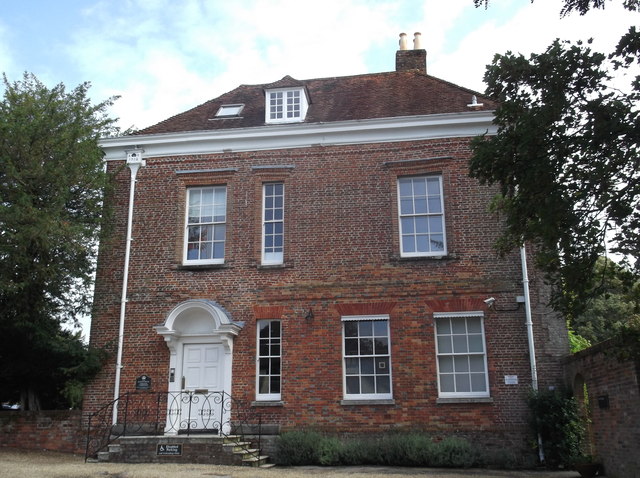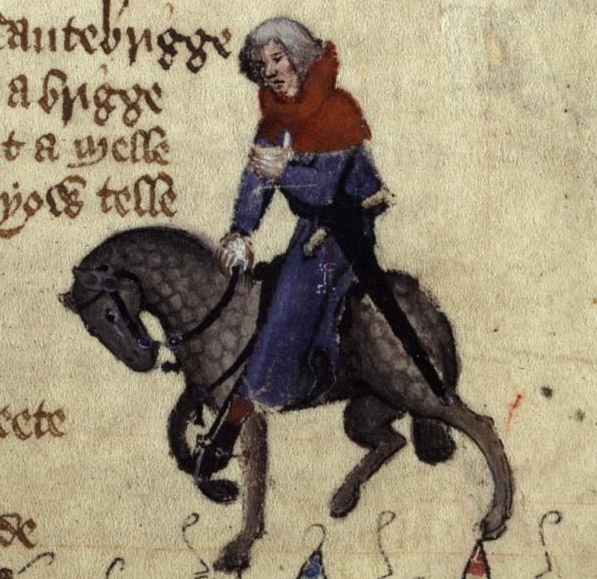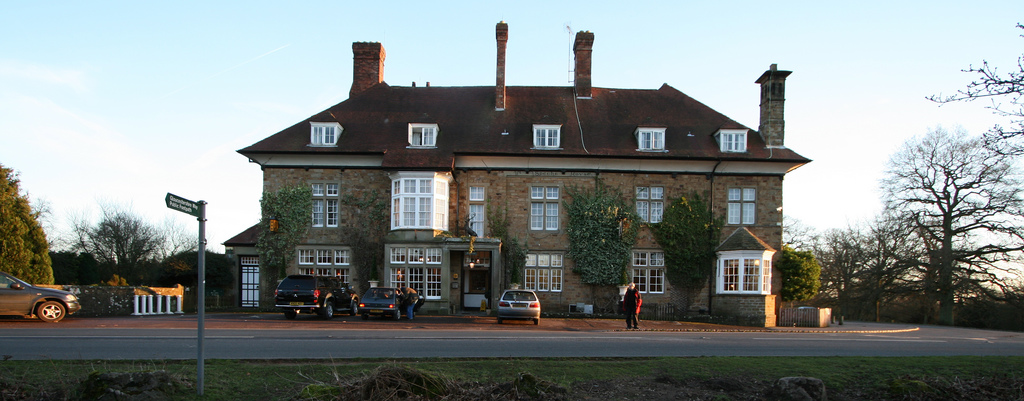|
Court Of Verderers
Verderers are forestry officials in England who deal with common land in certain former royal hunting areas which are the property of the Crown. The office was developed in the Middle Ages to administer forest law on behalf of the King. Verderers investigated and recorded minor offences such as the taking of venison and the illegal cutting of woodland, and dealt with the day-to-day forest administration. In the modern era, verderers are still to be found in the New Forest, the Forest of Dean, and Epping Forest, where they serve to protect commoning practices, and conserve the traditional landscape and wildlife. Origins Verderers were originally part of the ancient judicial and administrative hierarchy of the vast areas of English forests and Royal Forests set aside by William the Conqueror for hunting. The title Verderer comes from the Norman word ‘vert’ meaning green and referring to woodland. These forests were divided into provinces each having a Chief Justice who travelled ... [...More Info...] [...Related Items...] OR: [Wikipedia] [Google] [Baidu] |
Forestry
Forestry is the science and craft of creating, managing, planting, using, conserving and repairing forests, woodlands, and associated resources for human and environmental benefits. Forestry is practiced in plantations and natural stands. The science of forestry has elements that belong to the biological, physical, social, political and managerial sciences. Forest management play essential role of creation and modification of habitats and affect ecosystem services provisioning. Modern forestry generally embraces a broad range of concerns, in what is known as multiple-use management, including: the provision of timber, fuel wood, wildlife habitat, natural water quality management, recreation, landscape and community protection, employment, aesthetically appealing landscapes, biodiversity management, watershed management, erosion control, and preserving forests as " sinks" for atmospheric carbon dioxide. Forest ecosystems have come to be seen as the most important c ... [...More Info...] [...Related Items...] OR: [Wikipedia] [Google] [Baidu] |
Enclosure
Enclosure or Inclosure is a term, used in English landownership, that refers to the appropriation of "waste" or " common land" enclosing it and by doing so depriving commoners of their rights of access and privilege. Agreements to enclose land could be either through a formal or informal process. The process could normally be accomplished in three ways. First there was the creation of "closes", taken out of larger common fields by their owners. Secondly, there was enclosure by proprietors, owners who acted together, usually small farmers or squires, leading to the enclosure of whole parishes. Finally there were enclosures by Acts of Parliament. The primary reason for enclosure was to improve the efficiency of agriculture. However, there were other motives too, one example being that the value of the land enclosed would be substantially increased. There were social consequences to the policy, with many protests at the removal of rights from the common people. Enclosure riots a ... [...More Info...] [...Related Items...] OR: [Wikipedia] [Google] [Baidu] |
Reeve (England)
In Anglo-Saxon England, the reeve was a senior official with local responsibilities under the Crown, such as the chief magistrate of a town or district. After the Norman conquest, it was an office held by a man of lower rank, appointed as manager of a manor and overseer of the peasants. In this later role, historian H. R. Loyn observes, "he is the earliest English specialist in estate management." Anglo-Saxon England Before the Conquest, a reeve (Old English '' ġerēfa''; similar to the titles '' greve''/''gräfe'' in the Low Saxon languages of Northern Germany) was an administrative officer who generally ranked lower than the ealdorman or earl. The Old English word ''ġerēfa'' was originally a general term, but soon acquired a more technical meaning. Land was divided into a large number of hides—an area containing enough farmable land to support one household. Ten hides constituted a tithings, and the families living upon it (in theory, ten of them) were obliged to u ... [...More Info...] [...Related Items...] OR: [Wikipedia] [Google] [Baidu] |
Loughton
Loughton () is a town and civil parish in the Epping Forest District of Essex. Part of the metropolitan and urban area of London, the town borders Chingford, Waltham Abbey, Theydon Bois, Chigwell and Buckhurst Hill, and is northeast of Charing Cross. The parish of Loughton covers part of Epping Forest, in 1996 some parts of the south of the old parish were transferred to Buckhurst Hill parish, and other small portions to Chigwell and Theydon Bois. It is the most populous civil parish in the Epping Forest district, and within Essex it is the second most populous civil parish (after Canvey Island) and the second largest in the area. At the 2021 census, it had a population of 33,353. Loughton has three conservation areas and there are 56 listed buildings in the town, together with a further 50 that are locally listed. History The earliest structure in Loughton is Loughton Camp, an Iron Age earth fort in Epping Forest dating from around 500 BC. Hidden by dense undergrowt ... [...More Info...] [...Related Items...] OR: [Wikipedia] [Google] [Baidu] |
City Of London
The City of London is a city, ceremonial county and local government district that contains the historic centre and constitutes, alongside Canary Wharf, the primary central business district (CBD) of London. It constituted most of London from its settlement by the Romans in the 1st century AD to the Middle Ages, but the modern area named London has since grown far beyond the City of London boundary. The City is now only a small part of the metropolis of Greater London, though it remains a notable part of central London. Administratively, the City of London is not one of the London boroughs, a status reserved for the other 32 districts (including Greater London's only other city, the City of Westminster). It is also a separate ceremonial county, being an enclave surrounded by Greater London, and is the smallest ceremonial county in the United Kingdom. The City of London is widely referred to simply as the City (differentiated from the phrase "the city of London" by c ... [...More Info...] [...Related Items...] OR: [Wikipedia] [Google] [Baidu] |
Thomas Fowell Buxton
Sir Thomas Fowell Buxton, 1st Baronet (1 April 1786Olwyn Mary Blouet, "Buxton, Sir Thomas Fowell, first baronet (1786–1845)", ''Oxford Dictionary of National Biography'', Oxford University Press, 2004; online ed., May 201accessed 25 April 2013 – 19 February 1845) was an English Member of Parliament, brewer, abolitionist and social reformer. He had connections with the Gurney family. Early life Buxton was born at Castle Hedingham, Essex. His father, also named Thomas Fowell Buxton, died young, leaving three sons and two daughters. His Quaker mother's maiden name was Anna Hanbury. He completed his education at Trinity College Dublin, graduating in 1807. Through his mother's influence Buxton became associated with the Gurney family of Earlham Hall, Norwich, especially with Joseph John Gurney and Gurney's sister, the prison reformer Elizabeth Fry. He married their sister Hannah in May 1807. He lived at Belfield House, Weymouth, Dorset in the constituency he represented ... [...More Info...] [...Related Items...] OR: [Wikipedia] [Google] [Baidu] |
Speech House
The Speech House was the administrative building of the Forest of Dean in Gloucestershire, England, lying at the centre of the forest on the road from Coleford to Cinderford.Brooks & Verey The building was originally constructed as a hunting lodge for Charles II and the Speech House was authorised by the Act of 1668 as part of a reorganisation of the open land in the area, and its construction was finished in 1682. It hosted the "Court of the Speech", a sort of parliament for the Verderers and Free Miners managing the forest, game, and mineral resources of the area. It was severely damaged in the Revolution of 1688, but repaired soon thereafter. Around 1840 it began to be used as an inn, and by the late 19th century it was functioning as a hotel, which () it continues to do. To the southeast of Speech House is a small lake, Speech House Lake. Speech House pudding was a pudding traditionally served in the verderers' court room.FitzGibbon, Theodora (1975) ''A Taste of the We ... [...More Info...] [...Related Items...] OR: [Wikipedia] [Google] [Baidu] |
Fallow Deer
''Dama'' is a genus of deer in the subfamily Cervinae, commonly referred to as fallow deer. Name The name fallow is derived from the deer's pale brown colour. The Latin word ''dāma'' or ''damma'', used for roe deer, gazelles, and antelopes, lies at the root of the modern scientific name, as well as the German ''Damhirsch'', French ''daim'', Dutch ''damhert'', and Italian ''daino''. In Croatian and Serbian, the name for the fallow deer is ''jelen lopatar'' ("shovel deer"), due to the form of its antlers. The Modern Hebrew name of the fallow deer is ''yachmur'' (יחמור). Taxonomy and evolution The genus includes two extant species: Extant species Some taxonomists include the Persian fallow deer as a subspecies (''D. d. mesopotamica''), while others, such as the IUCN The International Union for Conservation of Nature (IUCN; officially International Union for Conservation of Nature and Natural Resources) is an international organization working in the field of nat ... [...More Info...] [...Related Items...] OR: [Wikipedia] [Google] [Baidu] |
Deer
Deer or true deer are hoofed ruminant mammals forming the family Cervidae. The two main groups of deer are the Cervinae, including the muntjac, the elk (wapiti), the red deer, and the fallow deer; and the Capreolinae, including the reindeer (caribou), white-tailed deer, the roe deer, and the moose. Male deer of all species (except the water deer), as well as female reindeer, grow and shed new antlers each year. In this they differ from permanently horned antelope, which are part of a different family ( Bovidae) within the same order of even-toed ungulates (Artiodactyla). The musk deer (Moschidae) of Asia and chevrotains ( Tragulidae) of tropical African and Asian forests are separate families that are also in the ruminant clade Ruminantia; they are not especially closely related to Cervidae. Deer appear in art from Paleolithic cave paintings onwards, and they have played a role in mythology, religion, and literature throughout history, as well as in herald ... [...More Info...] [...Related Items...] OR: [Wikipedia] [Google] [Baidu] |
Gloucester
Gloucester ( ) is a cathedral city and the county town of Gloucestershire in the South West of England. Gloucester lies on the River Severn, between the Cotswolds to the east and the Forest of Dean to the west, east of Monmouth and east of the border with Wales. Including suburban areas, Gloucester has a population of around 132,000. It is a port, linked via the Gloucester and Sharpness Canal to the Severn Estuary. Gloucester was founded by the Romans and became an important city and '' colony'' in AD 97 under Emperor Nerva as '' Colonia Glevum Nervensis''. It was granted its first charter in 1155 by Henry II. In 1216, Henry III, aged only nine years, was crowned with a gilded iron ring in the Chapter House of Gloucester Cathedral. Gloucester's significance in the Middle Ages is underlined by the fact that it had a number of monastic establishments, including: St Peter's Abbey founded in 679 (later Gloucester Cathedral), the nearby St Oswald's Priory, Glo ... [...More Info...] [...Related Items...] OR: [Wikipedia] [Google] [Baidu] |
Gloucestershire
Gloucestershire ( abbreviated Glos) is a county in South West England. The county comprises part of the Cotswold Hills, part of the flat fertile valley of the River Severn and the entire Forest of Dean. The county town is the city of Gloucester and other principal towns and villages include Cheltenham, Cirencester, Kingswood, Bradley Stoke, Stroud, Thornbury, Yate, Tewkesbury, Bishop's Cleeve, Churchdown, Brockworth, Winchcombe, Dursley, Cam, Berkeley, Wotton-under-Edge, Tetbury, Moreton-in-Marsh, Fairford, Lechlade, Northleach, Stow-on-the-Wold, Chipping Campden, Bourton-on-the-Water, Stonehouse, Nailsworth, Minchinhampton, Painswick, Winterbourne, Frampton Cotterell, Coleford, Cinderford, Lydney and Rodborough and Cainscross that are within Stroud's urban area. Gloucestershire borders Herefordshire to the north-west, Worcestershire to the north, Warwickshire to the north-east, Oxfordshire to the east, Wiltshire to the south, Bristol and Somerset ... [...More Info...] [...Related Items...] OR: [Wikipedia] [Google] [Baidu] |

.jpg)






.jpg)
_drawn_and_engraved_under_the_direction_of_Edward_Wedlake_Brayley.jpg)